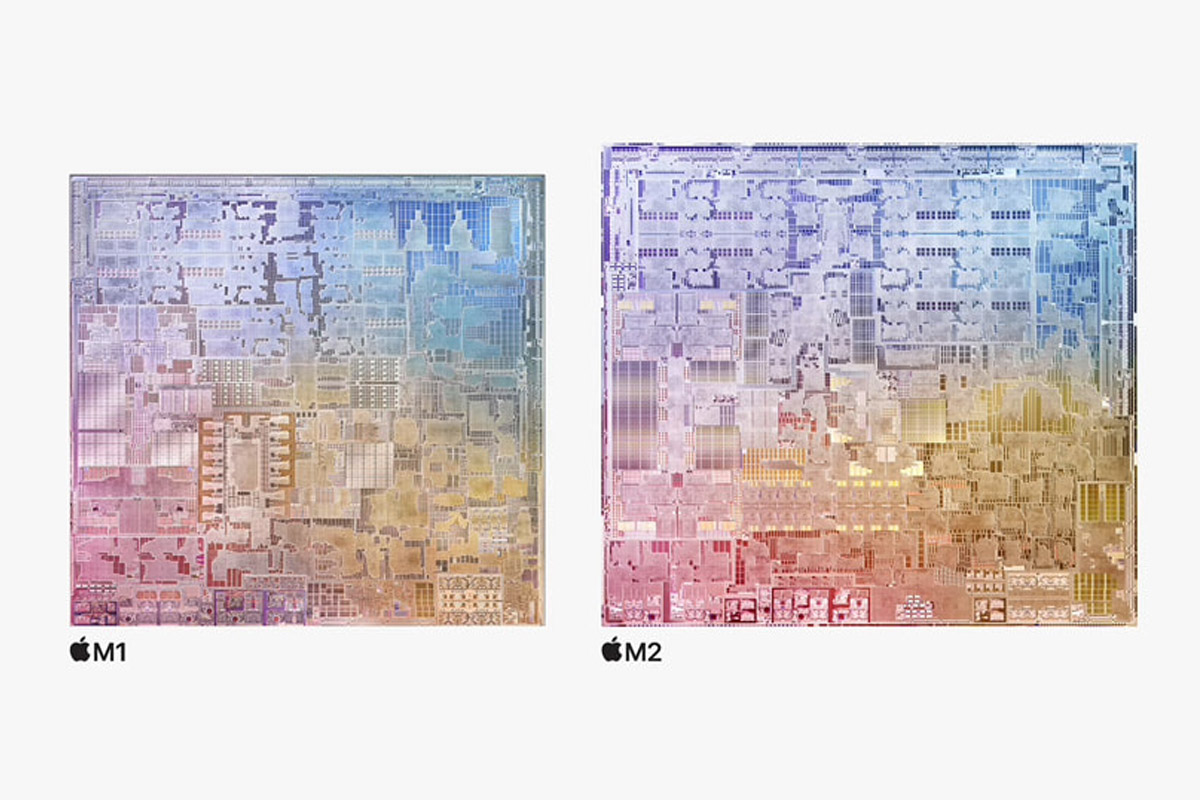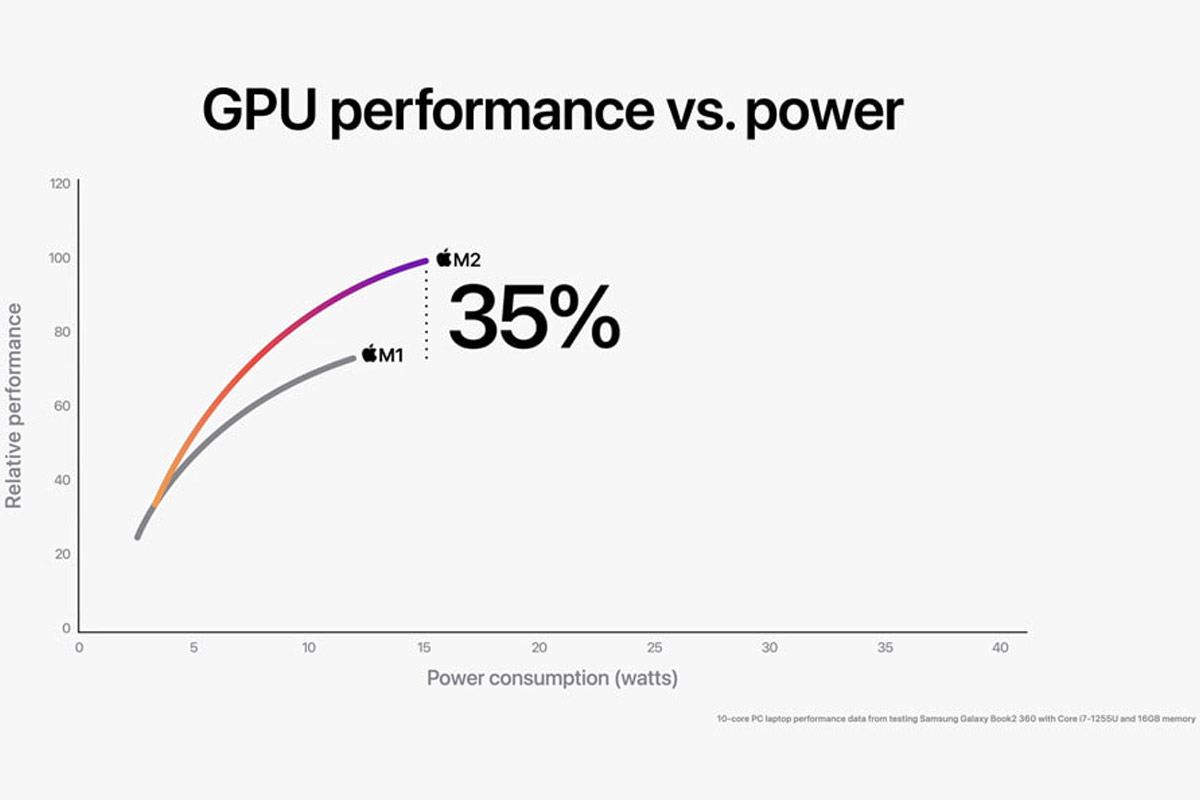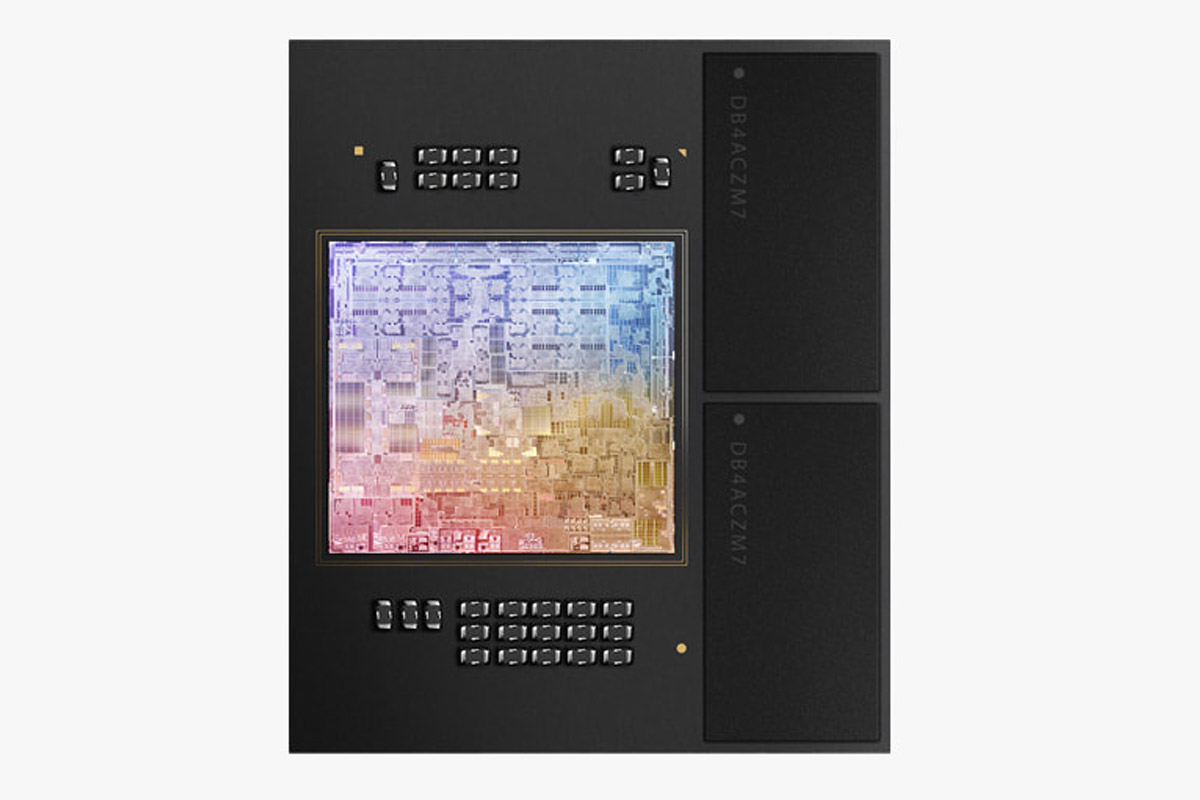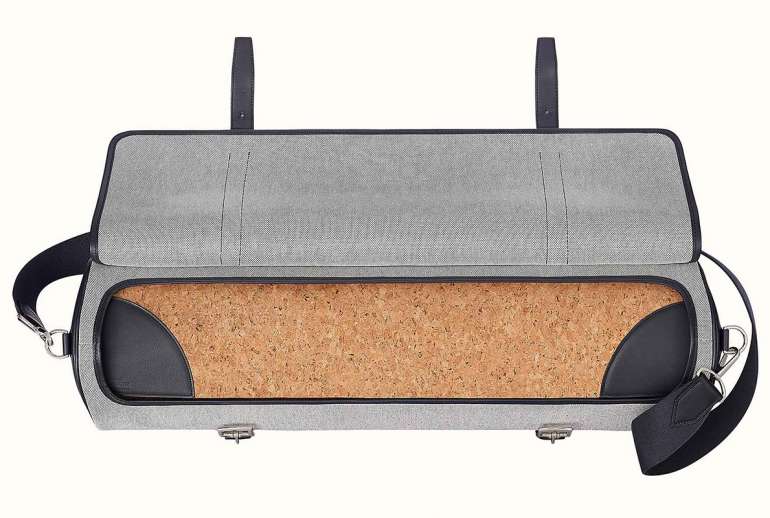Apple’s first ARM-based M1 microchip launched two years ago with drastic improvements when battery life and performance are considered. Now, the Cupertino giant is taking things to the next level with the M2 chip announced at the Worldwide Developers Conference.
This time around the focus is on refining the hardware capabilities rather than breaking new ground. To be precise, efficiency is at the core while expanding the performance capability with 24GB of unified memory and almost double the memory bandwidth capacity at 1000 GB/s.
Powerful cores and GPU

M1 chip comes with 8 cores – 4 high performance and 4 high efficiency. The latter can be attributed to the claimed efficiency improvement of almost 18 percent in multithread. There is a 16MB cache on the performance cores and the efficiency core has a shared 4MB cache.
There are 10 GPU cores making the M2 35 percent more powerful as compared to M1 in the high-power state. AI tasks will be significantly improved (around 40 percent) in the awe of neural engine, and all this spells good news for pro editors and digital artists.

The microchip is built on the 5nm manufacturing process, and gets 20 billion transistors which is around 25 percent more than on the M1 chip. This will bring a performance boost of 18 percent for the CPU, and 35 percent for the GPU as compared to the predecessor.
Bliss for power users

Media engine on the M2 microchip has 8K H.264 and HEVC video support which will enable system running on it to simultaneously play 4K and 8K videos. Obviously, we are talking about the 13-inch MacBook Air (base price $1,199) and the MacBook Pro (base price $1,299) that’ll be powered by the newly announced chip. Both these machines are expected to hit the market in July 2022.

The M2 chip is going to outperform M1 in every aspect, and for Apple fanboys, who’ve been waiting since 2020 for the release of a new mid-range microchip, this is good news. The silicon will come close to the M1 Max we hope, but even if doesn’t, still in its own category, it will be a headache for Intel and AMD.



